The Bad Man
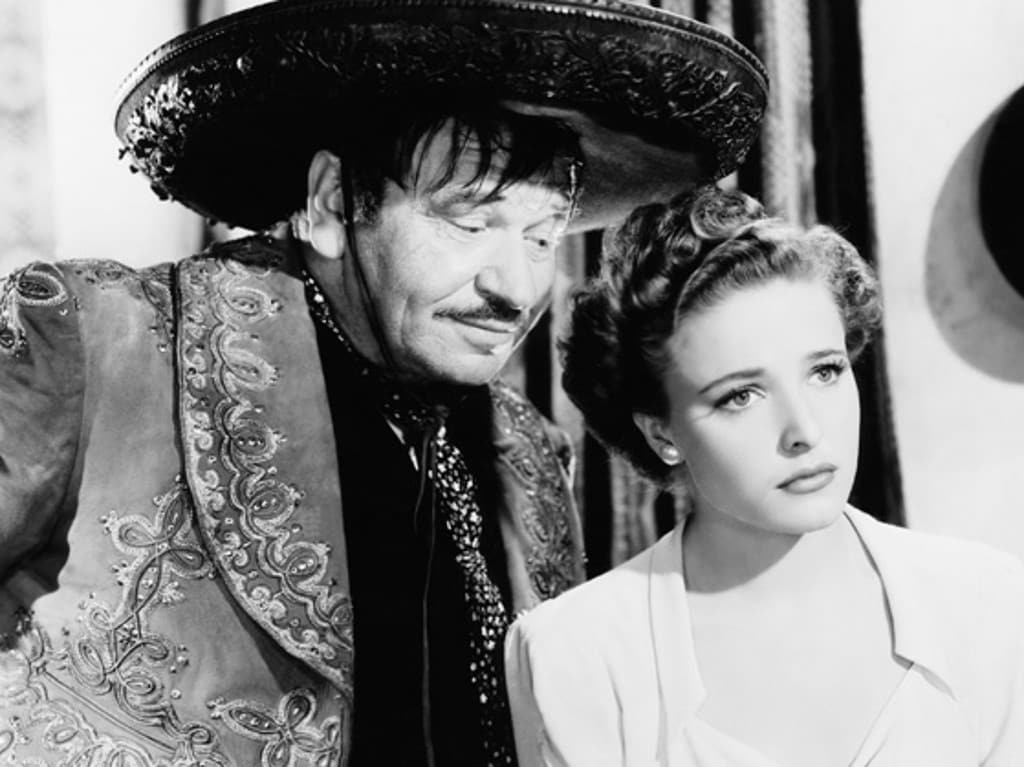
Brief Synopsis
Cast & Crew
Richard Thorpe
Wallace Beery
Lionel Barrymore
Laraine Day
Ronald Reagan
Henry Travers
Film Details
Technical Specs

Synopsis
American Gil Jones is happy when his childhood sweetheart Lucia unexpectedly arrives at his Mexican ranch, but hurt to learn that she is now married to New York businessman Morgan Pell. That same afternoon, Pancho Lopez, a notorious bandit, rustles the ranch's cattle and wounds Gil. Gil's wheelchair-bound Uncle Henry is angry over the loss because they are broke, and worried over Lucia's concern for Gil. That evening, when Morgan tells Lucia he has been happy in their marriage but fears she may still be in love with Gil, she promises to stay with him. A month later, when banker Hardy arrives in anticipation of foreclosing on the ranch, Henry suggests that Gil marry Hardy's daughter Angela. Gil and Lucia later talk theoretically about love, and Lucia reveals that she could never leave Morgan because he loves her so much. While ranch hand "Red" Gidding is walking with Angela, with whom he has always been in love, Morgan returns from town and offers to buy the apparently worthless ranch for $20,000. Hardy is angry because he wants the ranch, and a suspicious Henry gets both men to admit that there "may" be oil on the land. When Morgan raises his offer, Gil jumps at it and signs the paper, but Lucia is disappointed in Morgan. As Henry is lamenting the loss of the ranch and the fact that everyone seems to be unhappily in love, Lopez and his men arrive and take everyone hostage, except for Gil, who had gone out to the barn. Lopez likes Henry and the pretty Lucia, with whom he discusses love and freedom, but dislikes Morgan and hates Hardy because he is a banker. Henry then decides to foment trouble by explaining their underhanded attempts to get the ranch. When Lopez says that he knows exactly where oil can be found, Morgan and Hardy bid up to $200,000 for the ranch, to which Lopez is now laying claim. They soon find out that Lopez is only using the tactic to find out how much ransom he might get for them. He and his men then take them outside, but encounter Gil, who draws a rifle on Lopez. Gil is soon overcome by the bandits and Lopez orders him hanged, even though he is impressed with Gil's bravery. As Gil is strung to a tree, Lopez suddenly recognizes him as the man who had saved his life five years before. Lopez determines to help Gil by "changing the laws around here." After Henry explains all of the unhappy romances at the ranch, Lopez uses some psychology to help Angela realize that she really loves "Red," then declares that he is going to kill Morgan so that Lucia and Gil can be together. Gil intercedes because he does not want anyone hurt, but when Lopez tells Morgan that he will be killed, Morgan quickly offers to divorce Lucia. This greatly angers Lopez, who despises Morgan's cowardice and is not moved by Morgan's pleas that Lopez can have Lucia and all of his money in exchange for his life. Lopez then orders his man Pedro to take Morgan into the canyon to kill him. Gil and Lucia cannot dissuade Lopez, who then rides off with his men saying that he will make Gil happy whether he wants it or not. In the canyon, Morgan tries to bribe Pedro, but when they hear a gun battle between Lopez's men and "the policia," Pedro is distracted and Morgan is able to disarm him. Morgan then shoots him in cold blood. At the ranch, as Gil is comforting Lucia, Morgan comes back. He misinterprets their actions and orders Lucia to come with him, and when she refuses, he draws the gun on them. As Gil and Morgan then scuffle, Lopez appears at the door and shoots Morgan to death. Lopez tells Gil about Pedro, and says "now everything is fixed." When Henry reveals that the honest Gil gave the mortgage, which Lopez had returned to Gil earlier, back to Hardy, a frustrated Lopez offers to sell the cattle that he rustled from the Jones ranch to honestly pay off the mortgage. Lopez then gives Henry's wheelchair a fast-paced tow to town to pay the mortgage before the deadline.

Director

Richard Thorpe
Cast

Wallace Beery
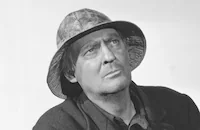
Lionel Barrymore

Laraine Day
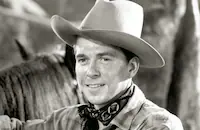
Ronald Reagan

Henry Travers
Chris-pin Martin
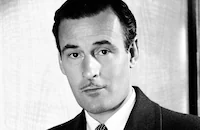
Tom Conway
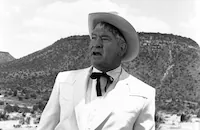
Chill Wills
Nydia Westman
Charles Stevens
Artie Ortego
Joe Dominguez
Daniel Rea
Crew
Clyde De Vinna
John S. Detlie
Cedric Gibbons
Sydney Guilaroff
Conrad A. Nervig
Ernesto Romero
Wells Root
J. Walter Ruben
William Ryan
Douglas Shearer
Gile Steele
Dolly Tree
Edwin B. Willis

Film Details
Technical Specs

Articles
The Bad Man (1941)
By the time MGM borrowed Reagan for The Bad Man, he had been under contract at Warner Bros. for three years and had worked his way up from B-pictures to important roles in two prestige productions in 1940, Knute Rockne -- All American and Santa Fe Trail. It was Reagan's first loanout, and an indication of his growing popularity that Hollywood's top studio wanted him for one of their films. However, his role in The Bad Man was not only a supporting one, it was supporting two of the biggest scene stealers in Hollywood.
Beery was notoriously difficult, and was known to rant and storm off the set if he didn't get his way. Barrymore was more genial, but no less dangerous, according to Reagan. He told Tony Thomas, author of The Films of Ronald Reagan, "I had been warned about Beery, but nobody said anything about Barrymore....Wally never rehearsed a line the way he would say it in the scene, so you were always on edge, trying to anticipate a cue for our own line. Lionel was, of course, theater through and through, and you were made better by his great ability -- provided you kept from being run over." Reagan meant that literally -- Barrymore suffered from debilitating arthritis and was confined to a wheelchair by then. He wielded that wheelchair like a weapon. "It's hard to smile in a scene when your foot has been run over and your shin is bleeding from a hubcap blow," Reagan said.
With all that thickly sliced ham on display in The Bad Man, Reagan, Day, and the other supporting players got lost in the shuffle. The hoary old story had not been sufficiently updated for modern audiences, and there was more talk than action. But for Reagan, the loanout apparently gave him some clout at his home studio. 1941 would be one of the most important years of his film career. The Bad Man opened in the spring. By the middle of the year, a Gallup poll ranked Reagan as one of Hollywood's top 100 stars. Granted, he only ranked 82nd, but at least he made it onto the list. In August, he signed a new contract and got a big raise. Soon after, Reagan began work on one of Warner's most prestigious films of the year, Kings Row (1941). It would provide him with the role of a lifetime, in which he gave the best performance of his career.
Producer: J. Walter Ruben
Director: Richard Thorpe
Screenplay: Wells Root; Porter Emerson Browne (play)
Cinematography: Clyde DeVinna
Art Direction: Cedric Gibbons
Music: Franz Waxman (uncredited)
Film Editing: Conrad A. Nervig
Cast: Wallace Beery (Pancho Lopez), Lionel Barrymore (Uncle Henry Jones), Laraine Day (Lucia Pell), Ronald Reagan (Gilbert 'Gil' Jones), Henry Travers (Mr. Jasper Hardy), Chris-Pin Martin (Pedro), Tom Conway (Morgan Pell), Chill Wills ('Red' Giddings), Nydia Westman (Angela Hardy).
BW-70m.
by Margarita Landazuri

The Bad Man (1941)
Quotes
Trivia
The play opened in New York City, New York, USA on 30 August 1920 and had 342 performances.
Henry O'Neill was listed as a cast member in a production chart, but he did not appear in the film.
Notes
According to Hollywood Reporter production charts, Henry O'Neill was cast in the film, but he was not in the viewed print nor mentioned in reviews. News items also note that portions of the film were shot on location in Flagstaff, AZ and Gallup, NM, and actor Chris-Pin Martin was borrowed from Twentieth Century-Fox for the film.
Previous film adaptations of Porter Emerson Browne's play were produced by First National in 1923, directed by Edwin Carewe and starring Holbrook Blinn, and in 1930, directed by Clarence Badger and starring Walter Huston (see AFI Catalog of Feature Films, 1921-30; F2.0237 and F2.0238). A Warner Bros.-First National version was produced in 1937 under the title West of Shanghai, directed by John Farrow and starring Boris Karloff and Beverly Roberts (see AFI Catalog of Feature Films, 1931-40; F3.5003). According to a Hollywood Reporter news item, M-G-M purchased the rights to the story from Warner Bros. in October 1940.

Miscellaneous Notes
Released in United States 1941
Released in United States 1941














